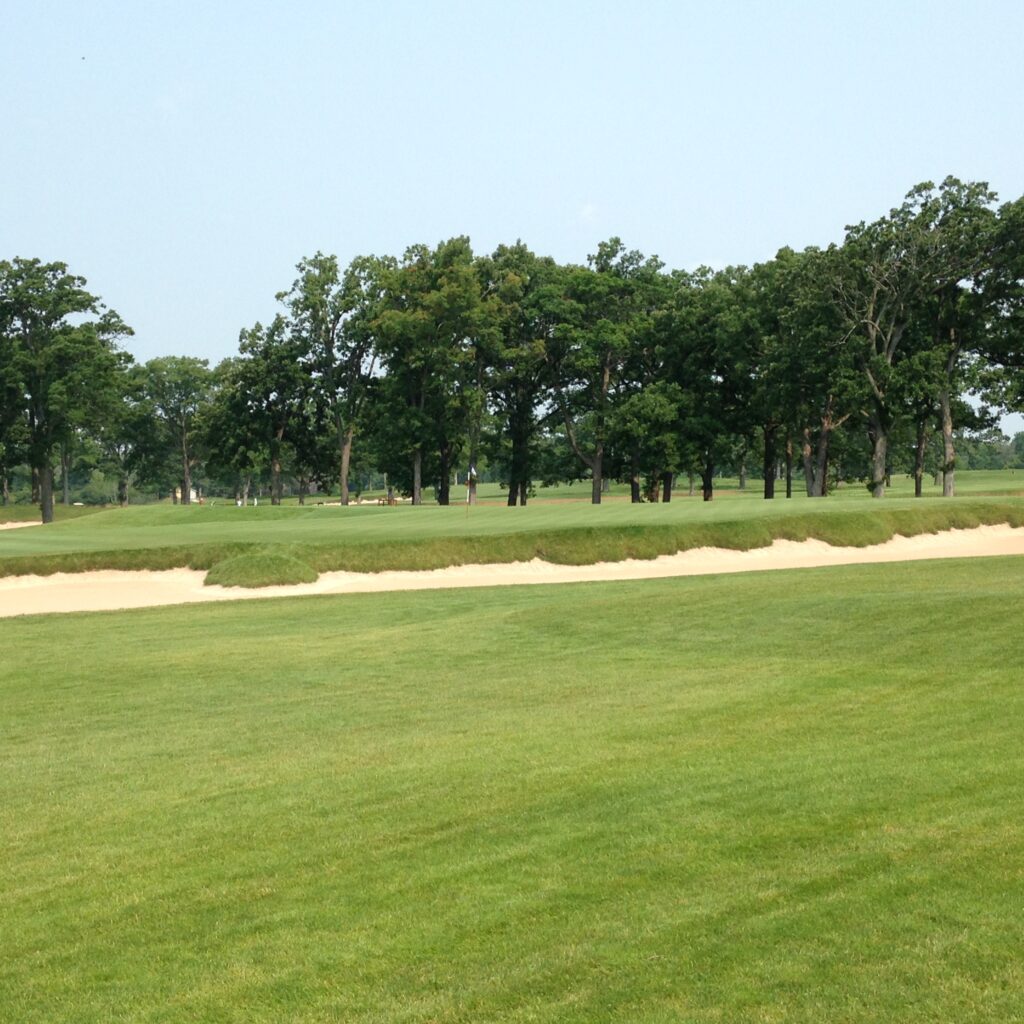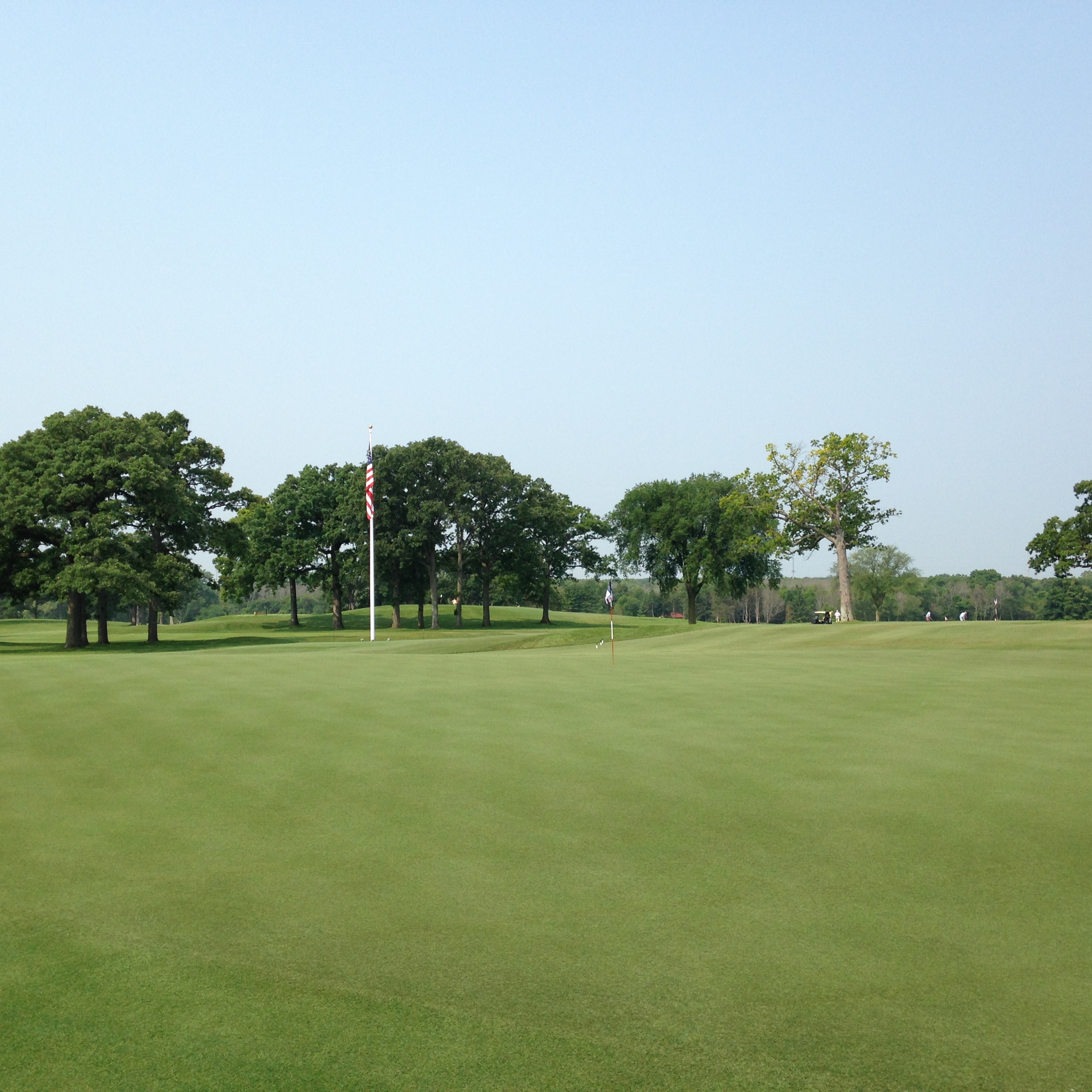Old Elm Club in Highland Park, IL is a top flight hidden gem. Having undergone a meticulous and thoroughly informed restoration at the hands of J. Drew Rogers, ASGCA, Old Elm is an unmitigated delight. Superb routing, interesting sight lines, wide corridors crossed and flanked by craggly bunkers and wonderful conditioning culminate in an overall joyful feeling at the nineteenth hole. Clearly, such wonder is built on the solid roots of the course’s H.S. Colt design and the Marshall and fox architecture of the clubhouse. Throw into the mix attentive caddies, friendly staff and a general quiet elegance and Old Elm is the complete package.
Harry Shapland Colt is a fascinating study. A Cambridge educated lawyer, Colt assisted in the design of Rye Golf Club just before the turn of the 19th to the 20th century. In so aptly and concisely describing Colt’s golf architecture style, The Colt Association summarized it as follows:
“Colt was a bold designer who built strategic rather than punitive courses that were adapted to the playing character of the then modern rubber-cove Hashed ball.”
Expanding on this theme, The Colt Association quotes sir Guy Campbell’s observations of the Colt approach, “The Eden course at St. Andrews, in Scotland, is a monument to the genius of H.S. Colt. True, there was good golfing ground, but there was also much that, at a cursory glance, appeared highly unsuitable – flat, featureless, sudden and at one end arbitrarily constricted. Yet out of this he contrived a links of character, great interest and wide variety..”
It is difficult to better describe Colt’s work at Old Elm as all of those elements are applicable. The additional point of design interest at Old Elm is the fact that Donald Ross took over for Colt in 1913 after Colt returned to England.
The care and knowledge that went into the restoration project at Old Elm Club spotlights the fine work of J. Drew Rogers. An excerpt from J. Drew Rogers’ website is appropriate here, to wit;
“In 2012, Old Elm received a visit from architecture historian and editor of Golf Course Architecture Magazine, Adam Lawrence. Lawrence, hailing frok the UK and surrounded by well-preserved works, is well versed in the courses and history from the hand of Harry Colt. He had this to say about Old Elm, “I can honestly say that i have NEVER seen a course like Old Elm in the U.S., and in a description that I gave to several people at a recent ASGCA meeting, I referred to the club as the American equivalent of Swinley Forest (UK) or Morfontaine (France).” Lawrence continued, “The work you are doing to return the course to its 1913 feel is quite remarkable, and when finished, you will have completed one of the most impressive restoration programmes in the U.S.”
At the risk of redundancy, the joy of Old Elm comes from experiencing all the shots required and the puzzlement when the execution falls short of the bar. Our host remarked on #1 tee that the course requires imagination and a keen short game and both are so true. Although #1 is a reachable par-5, our group had the wide disparity of a putt for eagle, a ball in the hazard and a three putt bogey. Number 2 is awesome with the approach linked to the volcano green at Bedford Springs. 3 is a magnificent one-shotter, which was truly a one-shotter as our playing partner aced it with a perfect strike. 4 is another far par-5, followed by a 4, a 5 wihc shares a green and contains both Redan and Biarritz features. Then, the 8th, a terrific par 4 was a crashing wave of a bunker crossing the fairway as it rises precipitously to the diabolical green. The eighth is a Colt study in and of itself. The ninth is a fun, short par-4 that can produce a birdie or an “other”.

The fun continues of the inward nine. 10 a short five, 11 a stout 4 and great holes leading to the great par 3 seventeenth [consult Drew Rogers website [for details] and the long 18th.
The comfortable confines of The Marshal and Fox Clubhouse provides the perfect oasis to reflect on the round. The beauty of the Clubhouse is its understated elegance and the fact that little has changed since its christening circa 1913.

